Ajrak fabric- Block printing
Natural bright colors, repeated patterns and eye catching color combination are major features of Ajrak fabric. The Ajrak block printing dates back to Sindh civilization.
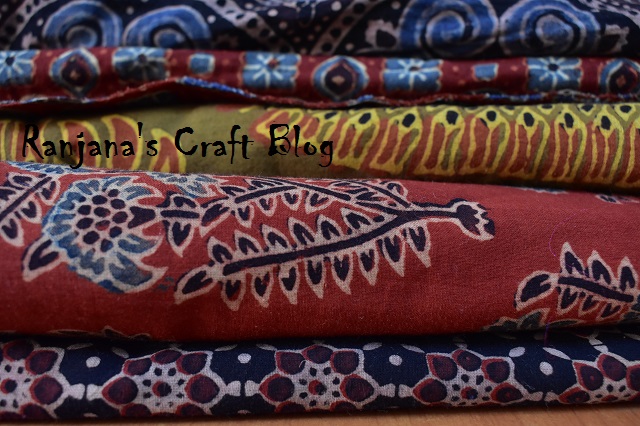
Varieties of Ajrak fabrics
Making of Ajrak fabric:
This beautiful Ajrak fabric making , undergoes many steps starting from preparing fabric.
1. Preparing fabric:
Cloth is torn and washed in the river water. Wet cloth is twisted and covered with some thick cloth, so that the steam doesn’t escape from it. The next day the cloth is heated by fire , so that the cloth becomes soft. Cloth then soaked in camel dung and seed oil. The wet cloth is tied and kept for 10 days.After that it is dried in the sun.
2. Making of printing blocks:
The blocks making is a complicated step in preparing Ajrak fabric. The blocks are made using Acacia Arabica trees. The blocks are carved with the patterns and reverse of the pattern.
3. Dying the fabric:
The fabric is dyed first with indigo. Nowadays Ajrak makers are using synthetic colors. The dyed fabric is dries and printed with desired patterns, by resist method with mud.
Different patterns in Ajrak:
The pattern is Ajrak are mostly motifs influenced by Arabic designs.
Some Ajrak makers different designs, to give modern touch to the fabric.
Here are some patterns used in Ajarak.
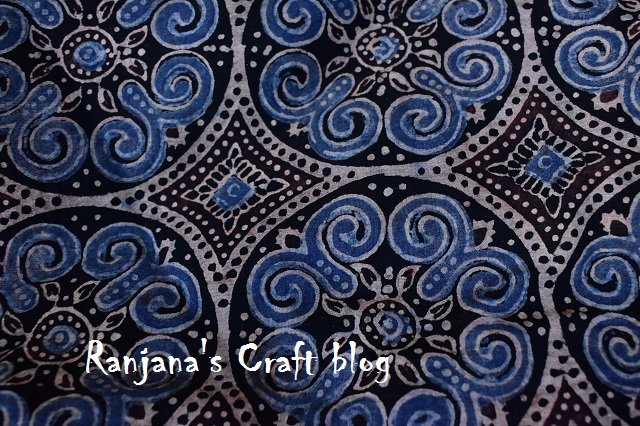
Circular design patterns in Ajrak
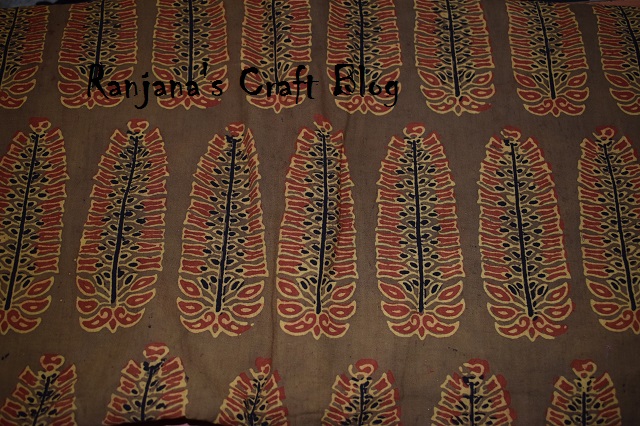
Tree patterns in Ajrak
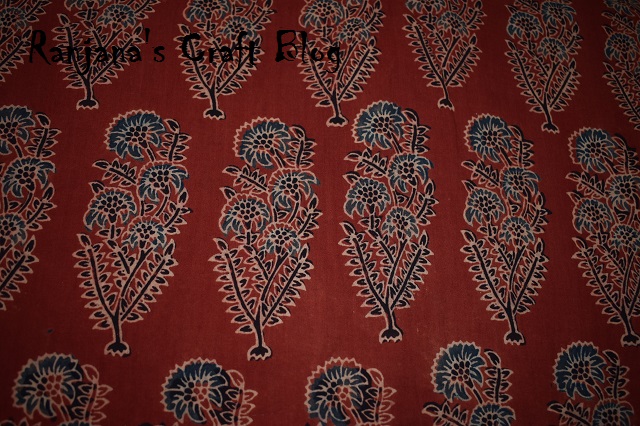
Flower pot designs in Ajrak
Innovations in Ajrak fabric:
Though Ajrak fabric were started in ancient time, to wear as shawls, bed spreads etc, now it has turned into fashion trend. Many Ajrak makers started printing , Ajrak Dupattas and Ajrak Sarees.
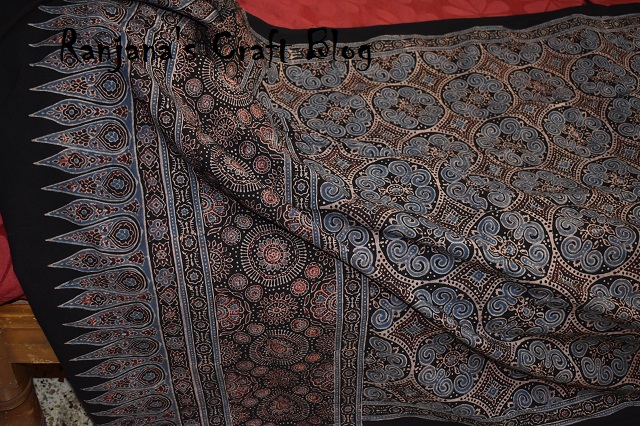
Ajrak Dupatta
As per fashion market demands, some Ajrak makers have innovated , blending several techniques of fabric making like tie and die , Chanderi Zari etc.
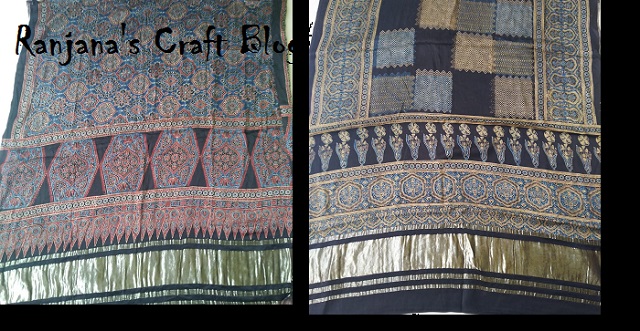
Ajrak with Chanderi Zari
Picture courtesy : Fahim Khatri Phone number:+917567283183
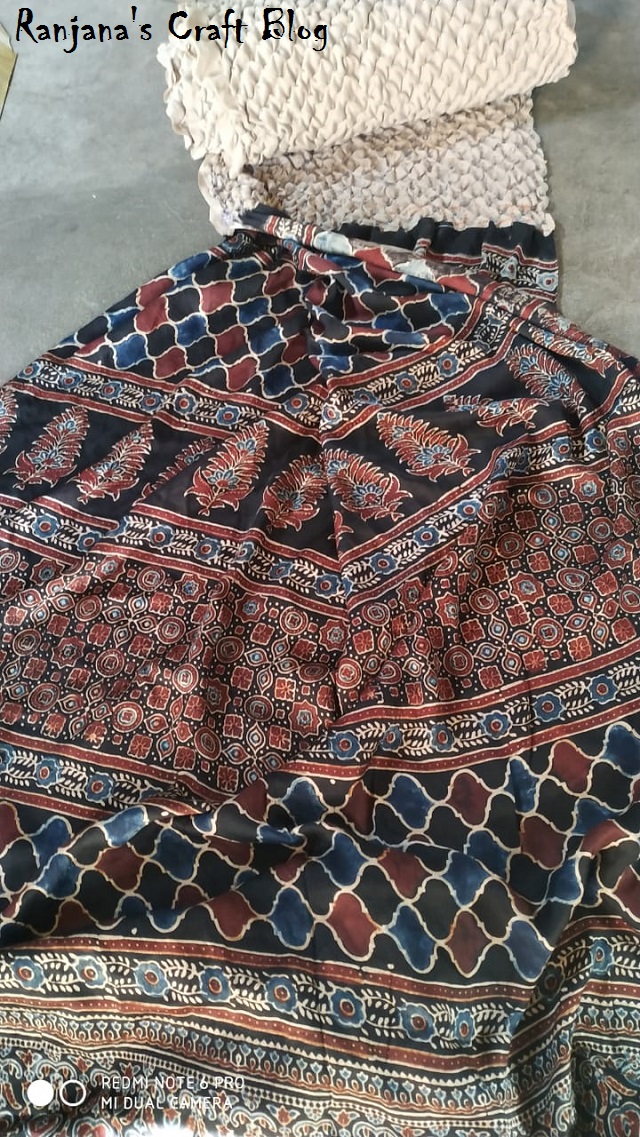
Ajrak with tie and die
Picture courtesy : Fahim Khatri Phone number:+917567283183
The traditional method of block printing , is revived and surviving because the innovations. These innovations have, created a space for Ajrak in fashion industry.
I am also planning to combine ilakal with Ajrak. Will share the result of this blending in coming posts.
Love, Laugh and Live the life to the fullest,
-Ranjana

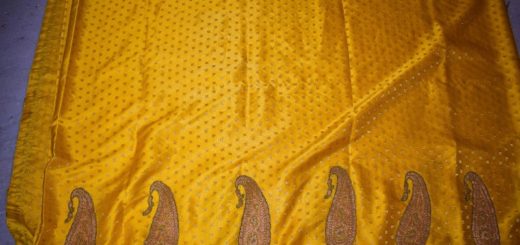
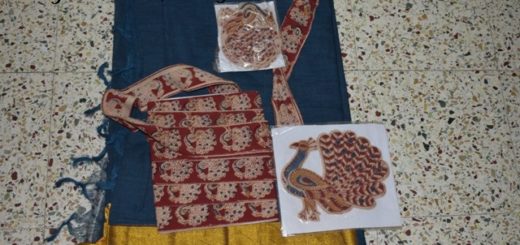
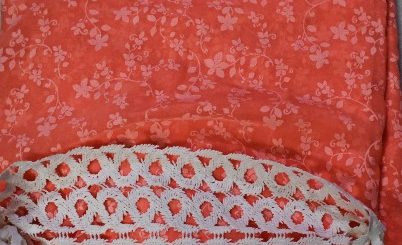
Wow…amazing and more so because it involves quite a hardwork.
The preparation of the cloth is interesting.
Every now and then we learn a little something here.
How have you been, Ranjana?
Thank you.
I am doing good.